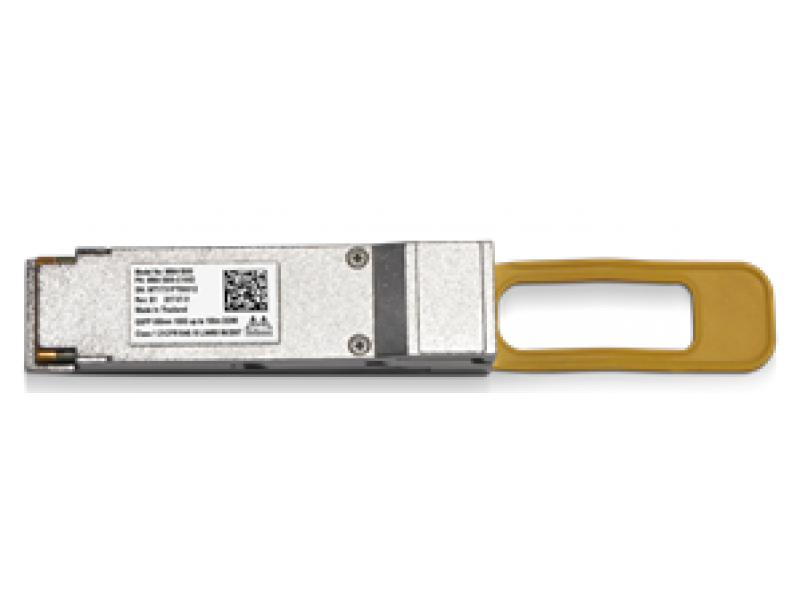Optical Transceiver Form Factors and Connector Types
21.06.22
0 Comments

SFP (Small Form Factor Pluggable) – A transceiver or cable with a one or two lanes (channel) in each direction. All cables and transceivers commonly used in data-centers are bidirectional.
SFP+ denotes the 10 – 14 Gb/s type of AOC/transceivers, while SFP28 is the notation for the 25-28 Gb/s products with an SFP form factor. The noted data rate is the data rate in each direction.
SFP-DD, a double-density version of SFP, with 2 lanes in a form factor with same width as the SFP is defined, but are not part of Nvidia’s product portfolio at the time of release of this paper.
SFP transceivers are part of the Ethernet architecture, but not used in InfiniBand systems.
QSFP (Quad Small Form Factor Pluggable) – A bidirectional transceiver or cable with 4 lanes in each direction.
QSFP+ denotes cables/transceivers for 4 x (10 – 14) Gb/s applications, while QSFP28 denotes the 4 x (24…28) = 100 Gb/s product range with QSFP form factor, used for InfiniBand EDR 100Gb/s ports and 100Gb/s Ethernet (100GbE) ports. The QSFP28 interface is specified in SFF-8679. QSFP56 denotes 4 x (50…56) Gb/s in a QSFP form factor. This form factor is used for InfiniBand HDR 200Gb/s and 200/400GbE Ethernet cables/transceivers in Nvidia’s portfolio.
QSFP-DD refers to a double-density version of the QSFP transceiver supporting 200 GbE and 400 GbE Ethernet. It employs 8 lanes operating at up to 25Gb/s NRZ modulation or 50Gb/s PAM4 modulation. QSFP-DD cables will in general not work in standard QSFP cages, but switches/NICs with QSFP-DD cages may support the older QSFP transceivers/cables.
OSFP (Octal Small Form Factor Pluggable) is wider and longer than QSFP and accommodates 8 lanes side-by-side. This form factor is used for 200/400/800G transceivers in Nvidia’s InfiniBand NDR portfolio. More info on https://osfpmsa.org
AOC (Active Optical Cable) – An optical fiber cable with an optical transceiver with the fibers bonded inside and not removable. The optical transceiver converts the host electrical signals into light pulses and back. Bonding the fiber inside means the AOC only needs to be tested electrically and eliminates the costly optical testing.
Transceiver (transmitter and receiver) is a converter with an electrical connector in one end and optical connector in the other end. It can have one or more parallel lanes in each direction (transmit and receive).
Transceiver or AOC? – You can argue that two transceivers connected with a patch cable replace an AOC. However, if you don’t have cleaning tools and experience with optical connectors, it is safer to use an AOC where the optical cable is fixed inside the ‘connector’. The AOC’s ‘connectors’ are actually similar to detachable transceivers, but they work as a kit with a well-known transceiver at the other end. AOCs don’t have any issue with multi-vendor interoperability. Nevertheless, it is easier to replace a pair of transceivers than an AOC since you don’t have to install a new cable as the cable is already in place.
Traditionally, AOCs are more common in InfiniBand installations, while transceivers with patch cables are more common in Ethernet systems with structured cabling.
DAC (Direct Attached Copper) cable or PCC (Passive Copper Cable) – A high-speed electrical cable with an SFP or QSFP connector in each end, but no active components in the RF connections. The term ‘passive’ means that there is no active processing of the electrical signal. The DACs still have an EEPROM, a memory chip in each end, so the host system can read which type of cable is plugged in, and how much attenuation it should expect.
Comments
Note: HTML is not translated!
Submit comment
 En
En
 De
De Fr
Fr Ru
Ru Es
Es Pt
Pt It
It Ar
Ar Se
Se Nl
Nl Jp
Jp Tw
Tw Gr
Gr Th
Th Fi
Fi Ko
Ko Pl
Pl Cn
Cn Tr
Tr No
No Dk
Dk Il
Il My
My Hu
Hu Hi
Hi







